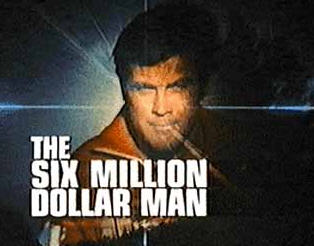 |
| Please don't be stupid readers, please don't be stupid readers... |
My dad has always been a strong supporter of hardbacks. They're better, stronger, and last much longer.
 |
| Wait, am I describing hardback books or Lee Majors? |
There are reasons, however, that you will choose a paperback over a hardback. It's cheaper, you want it to match the rest of the series, or, most likely, it is only available in paperback.
Let's back up for a minute.
It used to be that pretty much all books were released as hardback, a year later the book was released as paperback. I've mentioned before that the Young Adult genre boom the last decade has been primarily responsible for paperbacks in sizes other than mass market. I also seriously think YA is also the main cause for the release of paperback-exclusive books.
The problem with paperbacks is that they get pretty mutilated before too long. I generally keep mine in good condition, but sometimes I end up with poorly-maintained paperbacks by purchasing them used. It's no big deal though, if I wanted a mint-condition paperback copy of something, I would get it. However, there are times when I see where something has had the spine bent in such a way that it actually hampers reading, because the pages are trying too hard to slap back and I spend more time fighting with the book than reading it.
So, here's an example of two books I have purchased used.
 |
| Every surface I have is hyper-reflective. |
The one on the left has all kinds of cracks down it. If you insist on doing that, make multiple cracks like this throughout the book. (I was going to use an example of a badly bent one, but I couldn't find it. It, however, has only a single crack in the center of the book, and both halves always try to come together over and over.) The right book, meanwhile, has a smooth spine. Cracks or not, there's a reader-friendly way of folding some paperbacks. I say "some" because not all will have this feature.
 |
| "OMG KAWAII DESU NE!" *slap!* |
 |
| Okay, MS Paint. |
On the left side of the book is an indented crease. This crease is intentional and made for the very reason I'm about to show you.
Take the book and, with the thumb of your left hand, press down on the left side of the crease. With your right hand on the backside of the front cover (not the back of the book!) push it open. Here is a top view of what you will be doing. You are generally going to be pushing it so that it is 90 degrees to the pages of the book.
 |
| If she's using both her hands...THEN WHO WAS CAMERA!? |
Work your way slowly from the top of the book to the bottom.
Next, turn the book backwards and upside down, like you've never seen a book before in your life.
 |
| "It be for crushin' rats, right?" |
Fold if just as you did the front part, working your way toward yourself.
 |
| "I am aware the cheap-o price sticker is still there." |
You may need to work it a few more times until it comes out satisfactory. A quick note about folding on the crease is that sometimes the first page will try to follow with it (as seen in the following picture.) That's fine. It's really up to you whether to include it in the folding process or not. I prefer something of a hybrid, since not including it could cause it to try and tear free of the glue, but I don't include it so much that the page gets bent.
 |
| For some reason you suddenly feel like drinking a Pepsi... |
You'll know you have a good bend when the pages want to stay that way to an extent. Don't worry about ruining the book so that it sticks like that. If you keep on a shelf or put some weight on it, it will eventually regain its kept-closed shape, but the crease will be handy for when you open it again.
 |
| Airplane noises are mandatory. |
Most importantly, when you reach the middle of the book, the place most likely to cause cracks in the spine, the folded-out creases will be in a better shape to help support the book being open while maintaining the spine.
Not all books will have this crease. You primarily find it on comics and manga, but with paperbacks it's a 50/50 chance.
Also, random facts about my book of choice for this post: Oh my Goddess! is actually a mistranslation, running on the assumption that it was a pun-like title of the phrase "Oh my God." The Japanese symbol for the "Oh" in the title is actually more of an "Ah." When the manga was reprinted later it was more correctly titled Ah! My Goddess. So these days you can find the manga and the anime as both the Oh and Ah format.
In the manga and anime of Oh! My Goddess the three goddesses that are primary to the story are Beldandy, Urd, and Skuld. It was only within the last year that I figured out they are based on Norse Goddesses. Uror (past), Veroandi (present), and Skuld (future).
My brain is wasted on processing information like that.



No comments:
Post a Comment